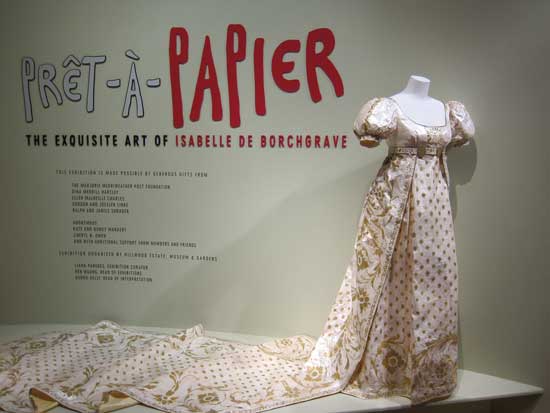
I had the great good fortune to see the exhibit Prêt-à-Papier at Hillwood Estate, Museum and Gardens last week with a good friend who also loves to sew. Artist Isabelle de Borchgrave has created a wardrobe of couture garments and accessories entirely from paper. Employing techniques from painting to crumpling and pleating, each garment is a masterpiece. Based on historical garments from the late 17th to early 20th centuries, each one is crafted with details likely found in the original. Borchgrave uses a number of different types and weights of paper, some as fine and sheer as organza, others with the texture of fine brocade. Here are pictures of many of the pieces in the exhibit which runs through January 24th.
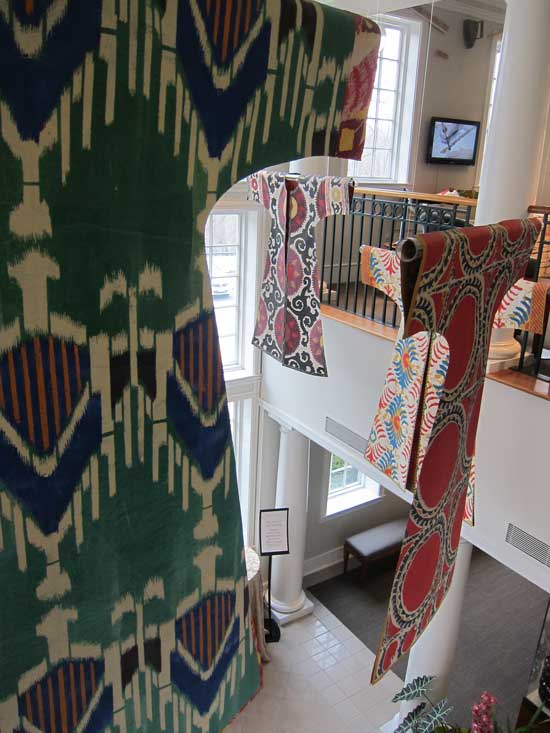
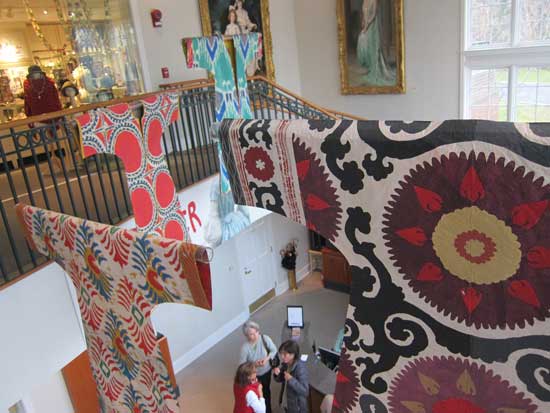
The tour begins in the Visitor Center with a video about the artist and samples of the different papers she used. These colorful caftans were part of the exhibit.
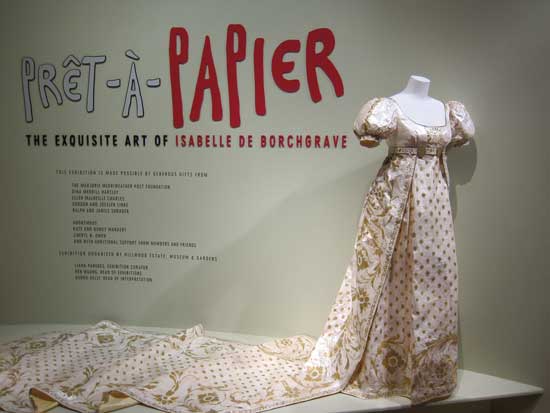
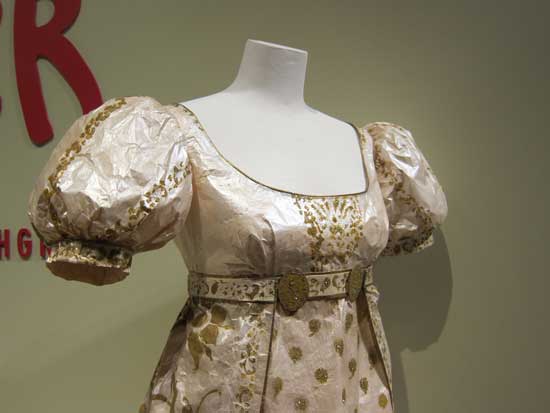
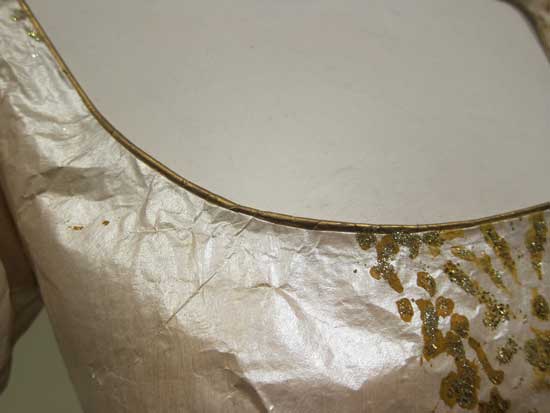
The bulk of the exhibit is housed in the Adirondack House. This is the first piece that greats you on entry. The inspiration was the coronation gown of Empress Josephine, 1804. Jewels and beads are simulated with glitter. There is even paper piping along the neckline (some of you know how much I love piping!)
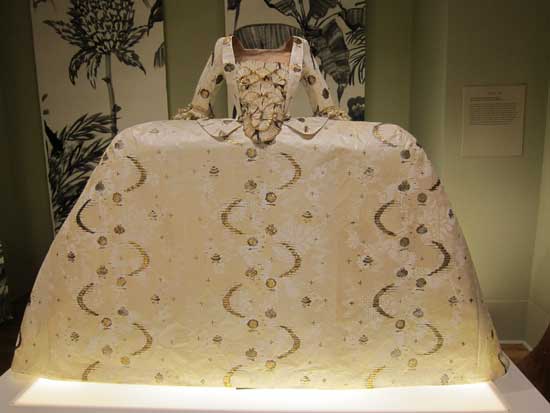
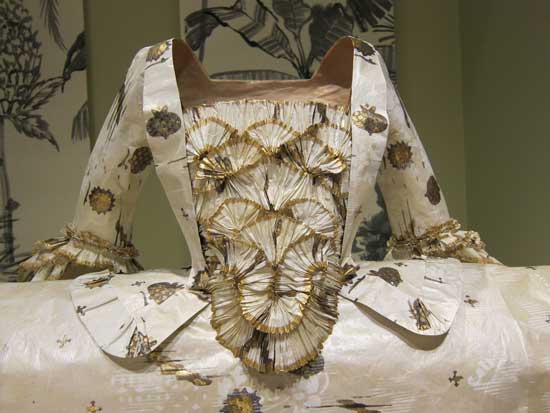
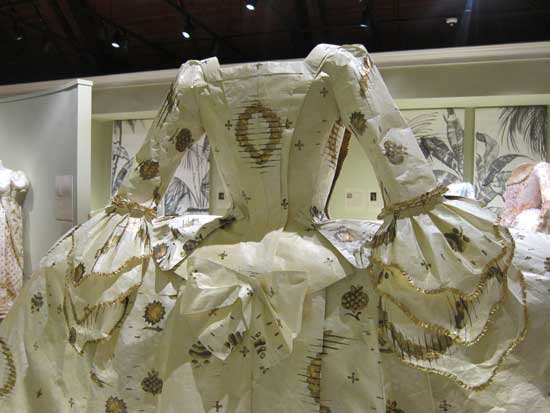
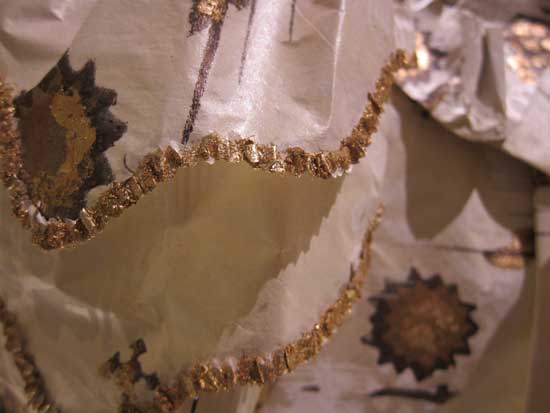
Based on a court dress from England, c. 1755.
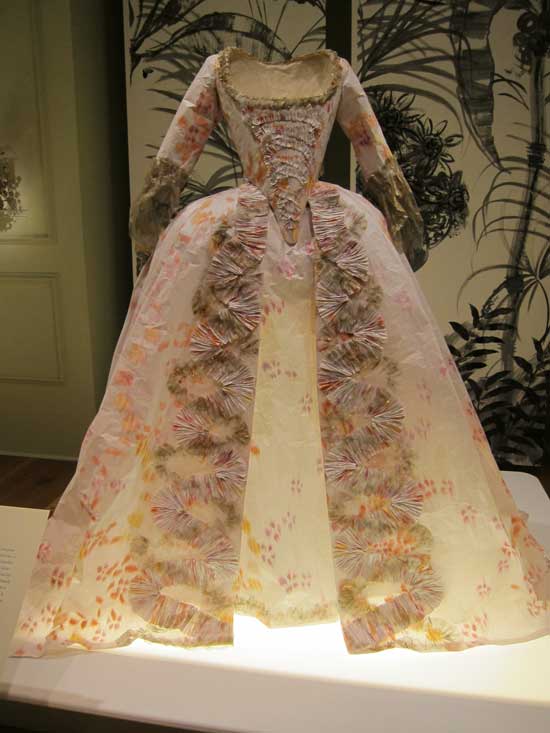
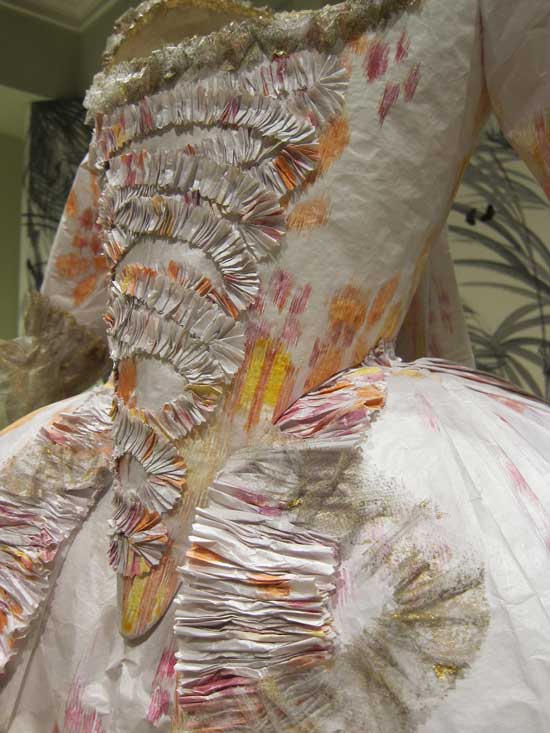
A French-styled dress inspired by the works of painter Jean-Antoine Watteau.
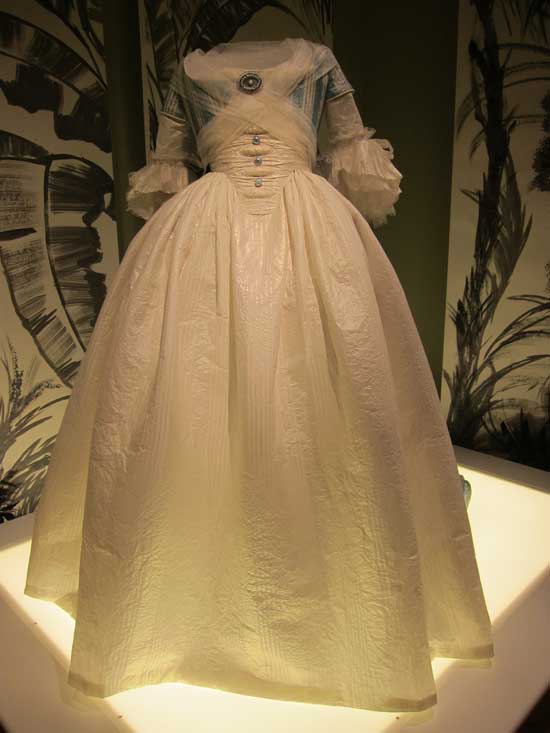
This gown is based on the one worn in the painting Self Portrain with a Harp by Rose-Adelaide Ducreux, 1791. The underlighting was particularly effective on this piece.
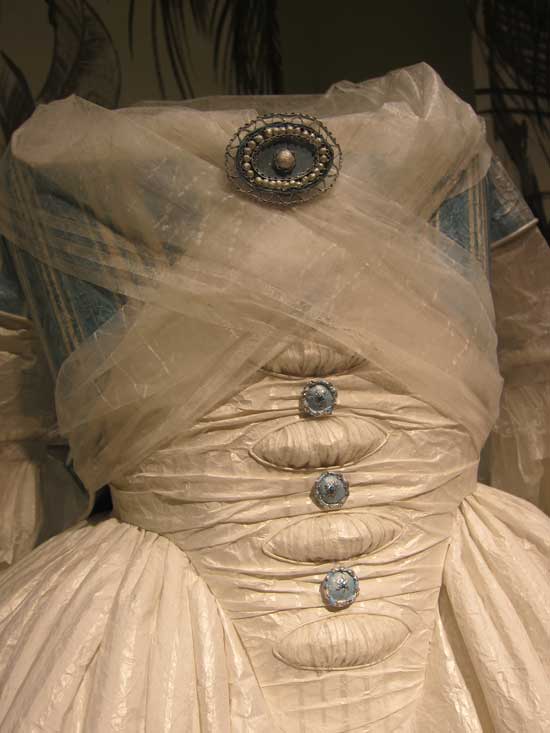
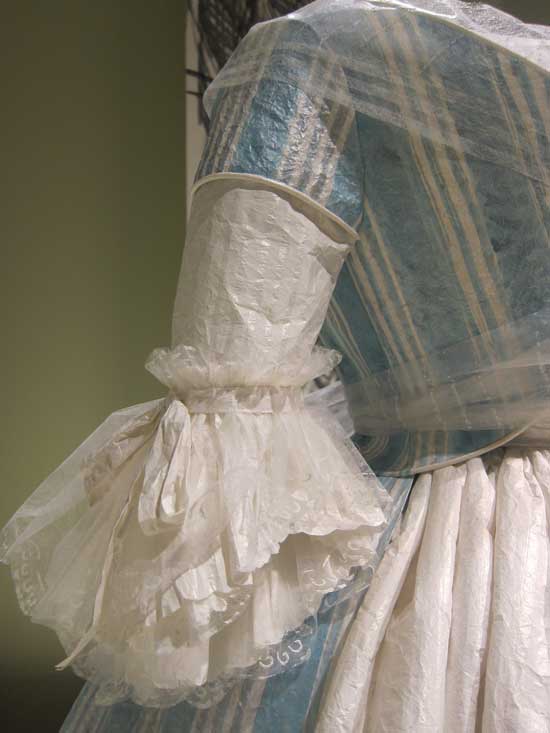
The gauze-like scarf and layers of lace on the sleeve are created from very delicate paper painted with a lace design.
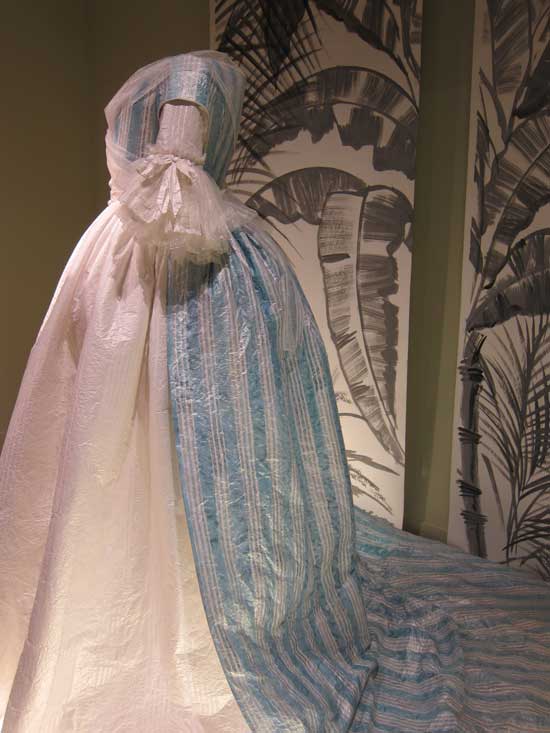
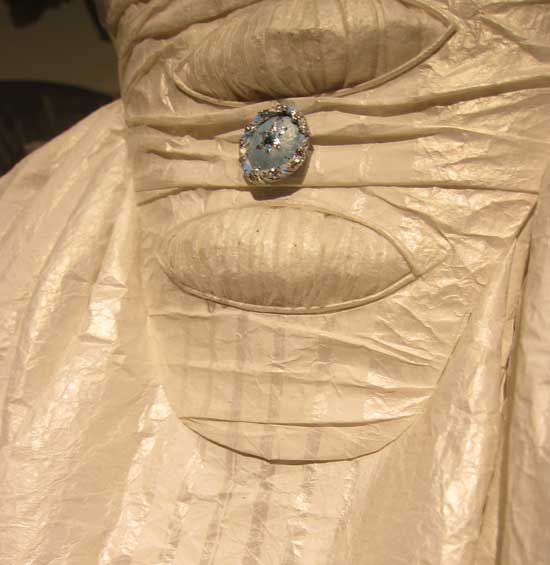
I took this photo to show how perfectly the stripes match at the center front.
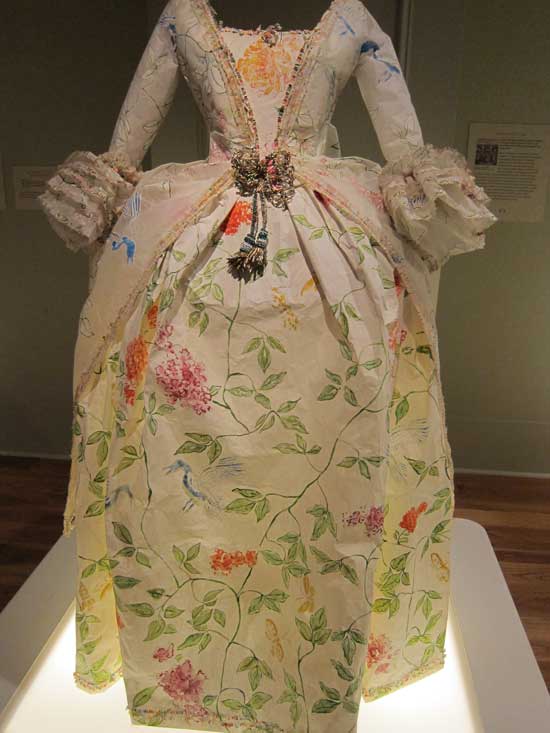
Inspired by the painting Le Bal Pare, c. 1760 by Auguste de Saint-Aubin.
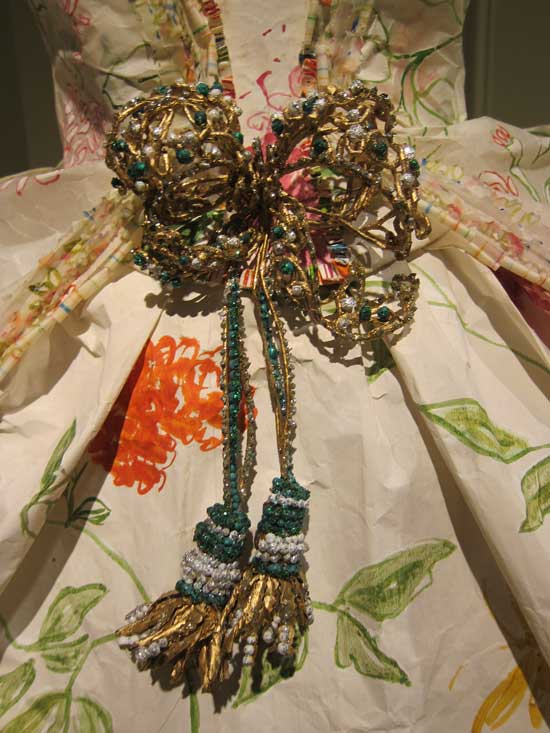
Even the elaborate jeweled closure is made from paper.
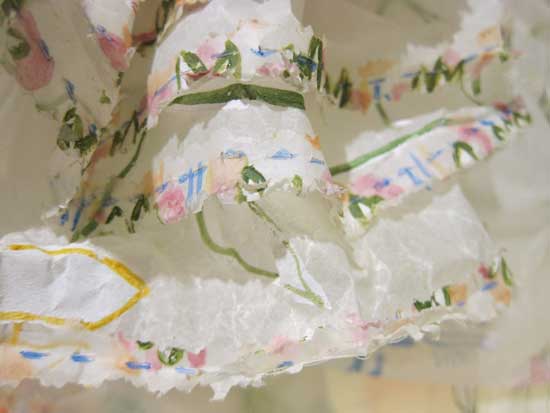
The blue stitches were actually sewn on the garment with thread.
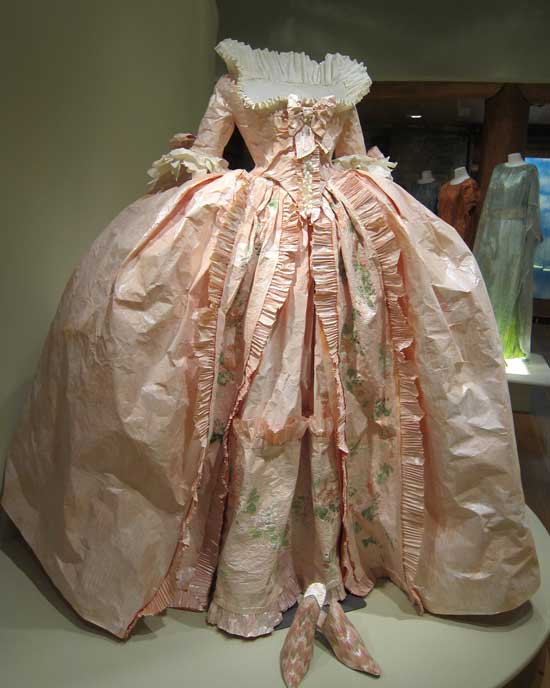
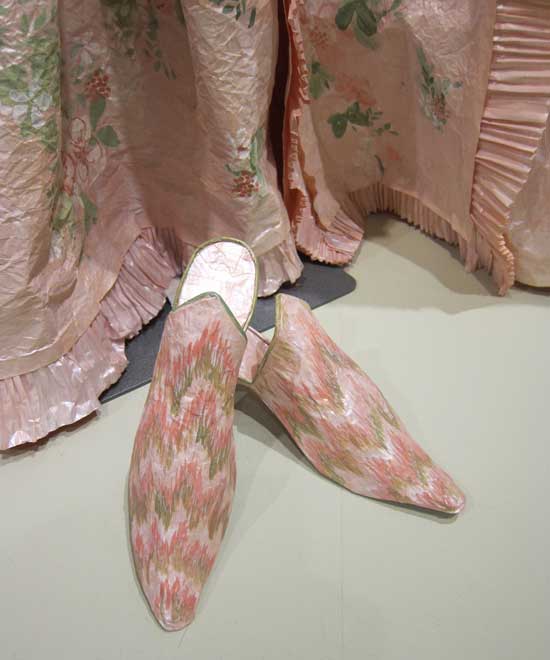
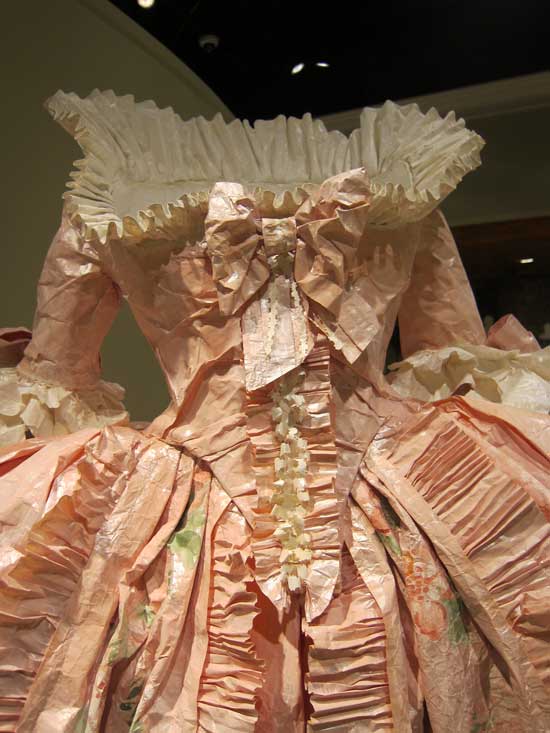
Based on a 1777 engraving of Marie Antoinette by Jean-Michel Moreau le Jeune along with matching shoes.
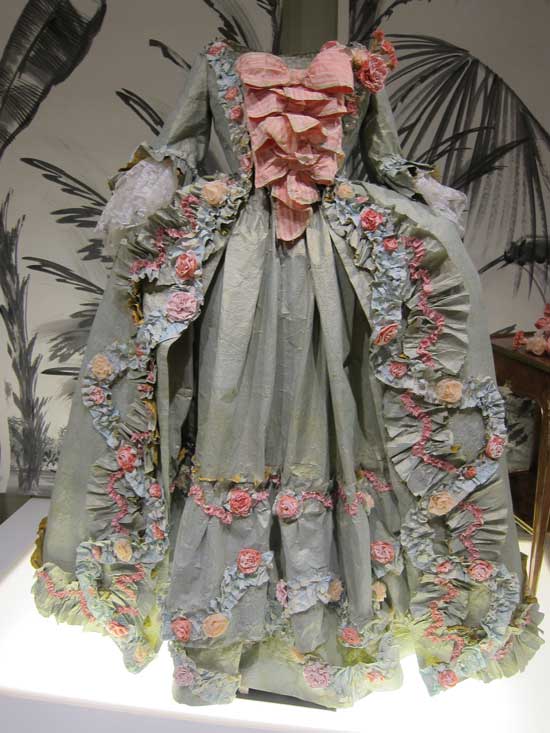
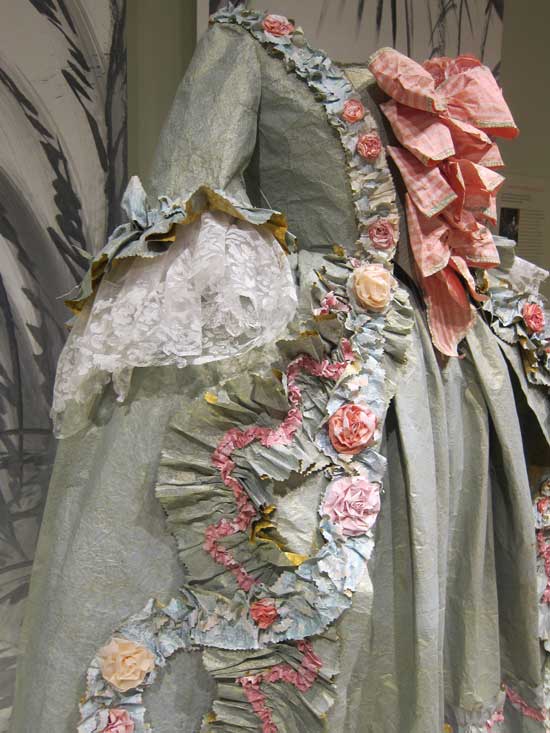
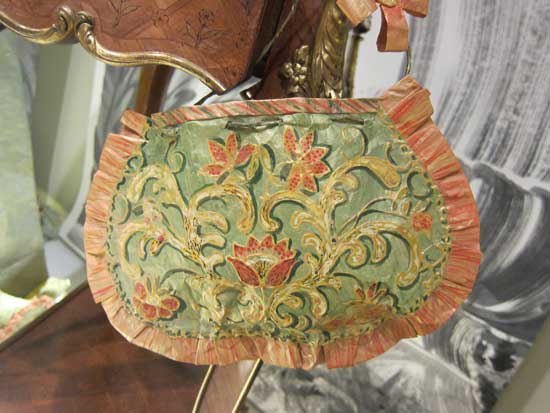
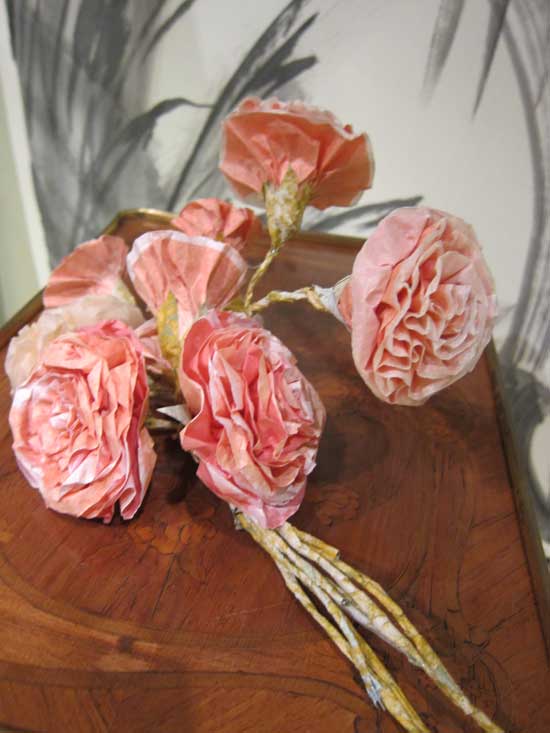
Madame de Pampadour dress, from Francois Boucher's Portrait of the Marquise de Pampadour, 1756. The dress has more than 120 applied paper roses. The sleeves were absolutely stunning, the painted paper closely mimicing real lace. Note matching purse.
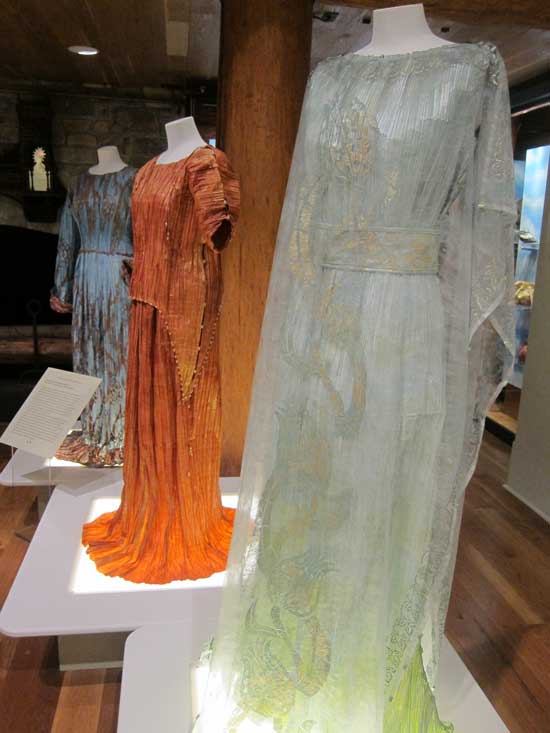
Changing directions at bit, these three gowns were all inspired by Mariano Fortuny, who designed pleated gowns in the early 20th century. Close up shots of each show more detail.
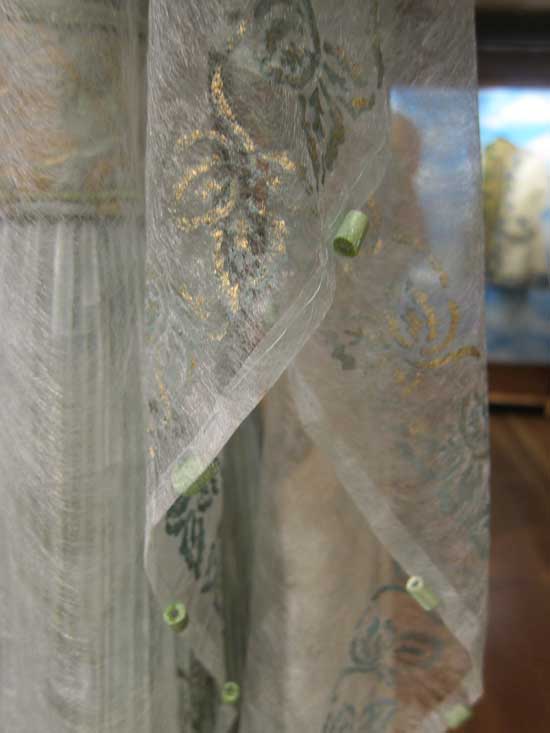
This gown had a beautiful, soft green pleated underdress and a sheer, beaded over dress.
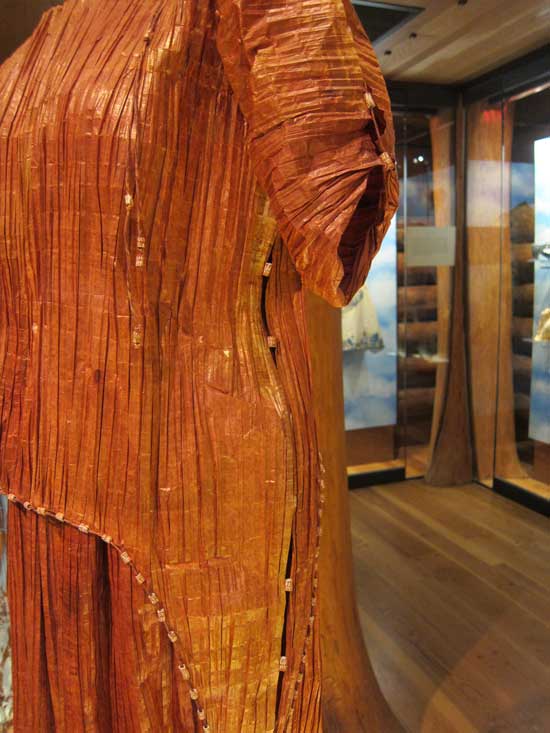
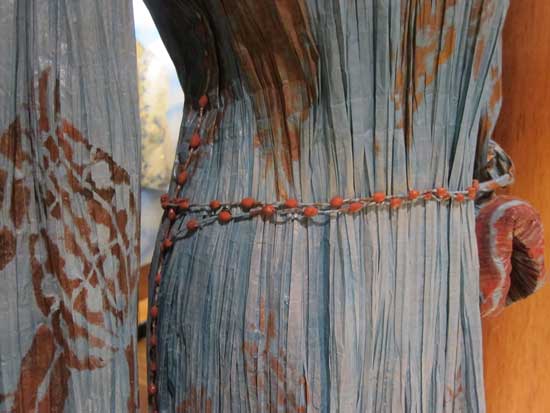
More pleats and beads (made from paper, of course).
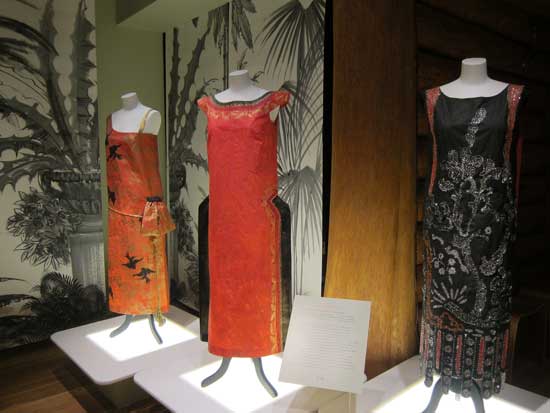
Three early 20th-century dresses, inspired by the flapper era. The black dress on the right was embellished with glitter resembling ornate beading.
The garments in the Adirondack House were accesible up close. It was possible to see the detail very clearly. The remainder of the pictures come from the garments in the main house which were all roped off, so it was not as easy to get a close look at them.
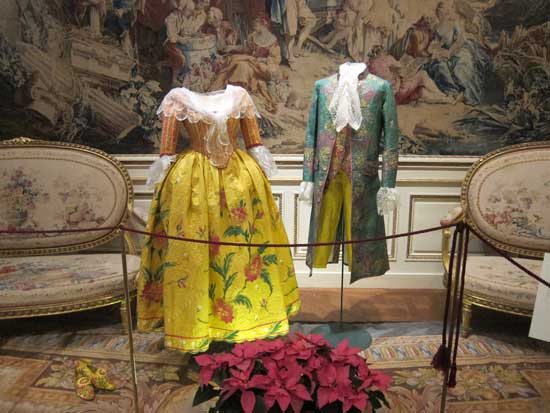
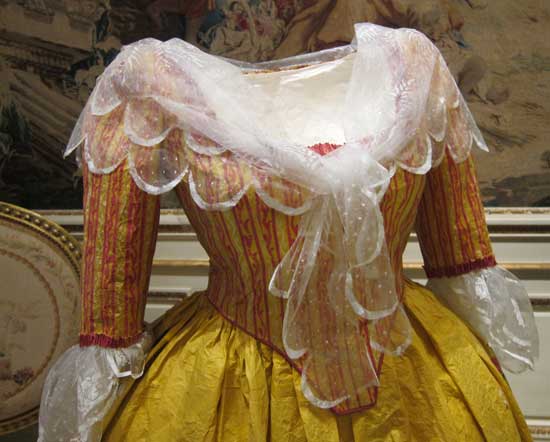
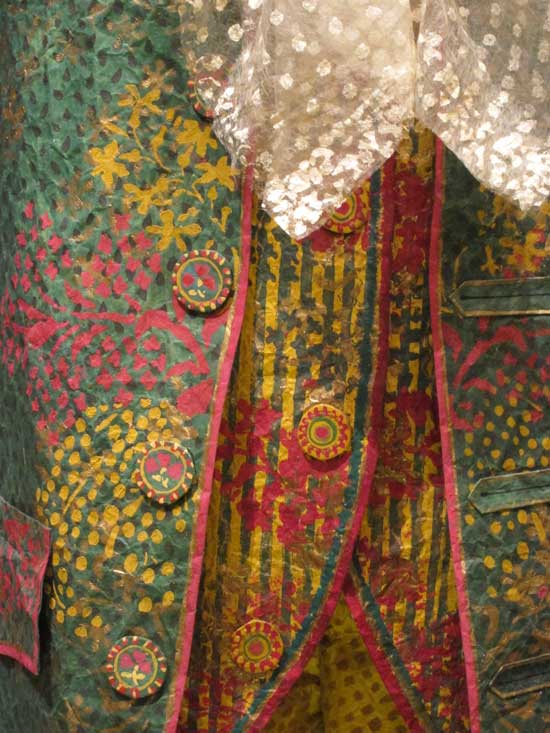
Based on figures from the tapestry hanging behind them, these garments showed lovely detail from the sheer fichu (scarf) on the lady's gown to the buttons and bound buttonholes on the gentleman's ensemble.
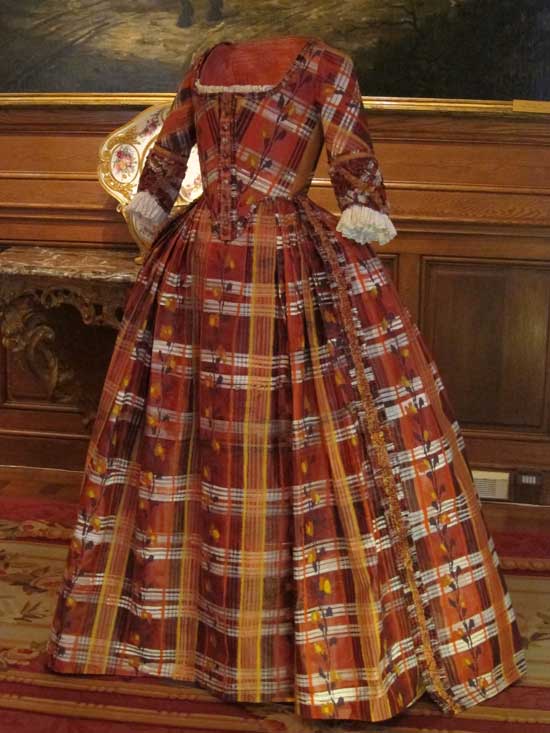
I truly wondered if this piece was a permanent part of the house decor. The "fabric" looked so much like just that it was hard to believe it was paper.
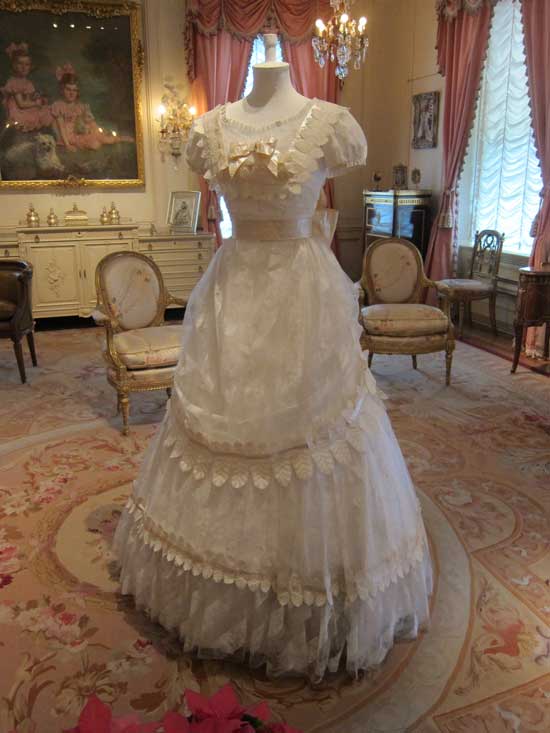
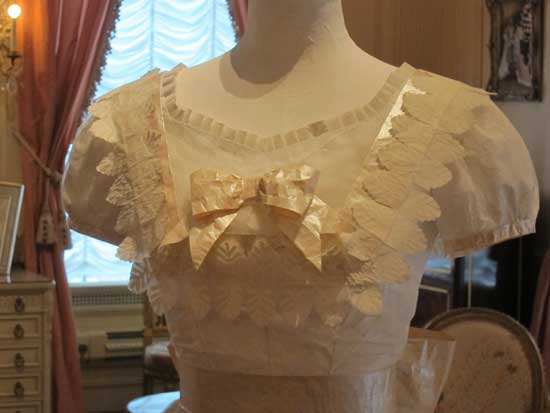
Based on an evening dress from 1866.
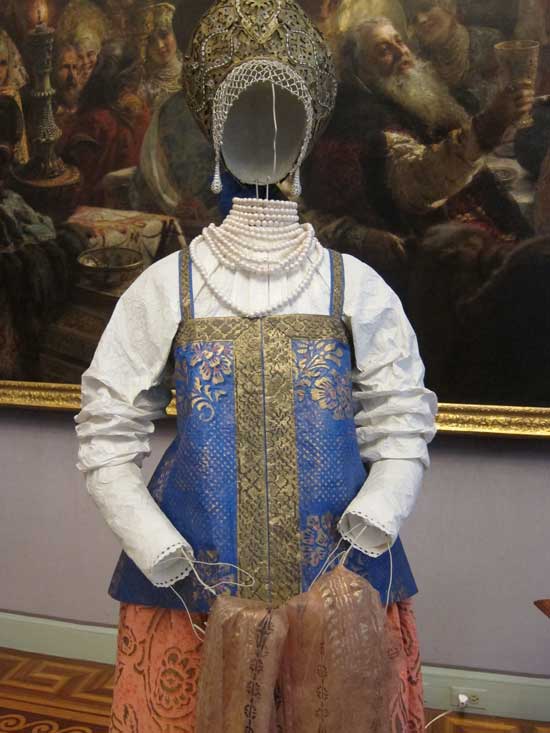
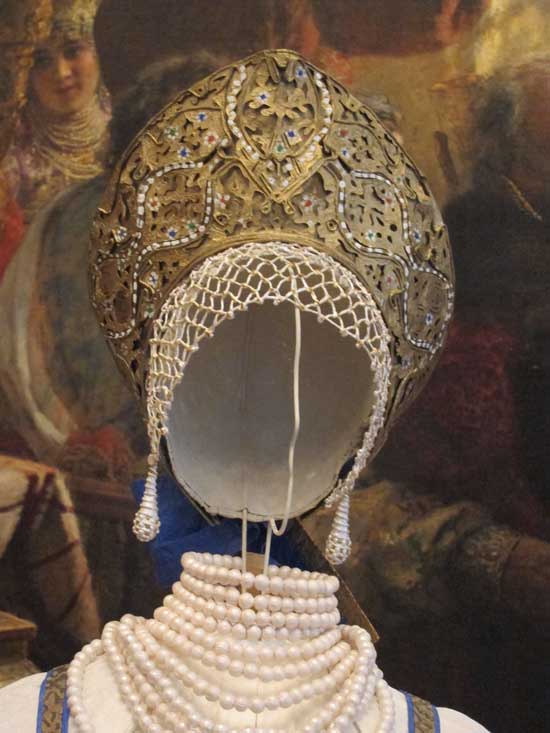
While I did not care for this garment (based on a portion of the painting behind) I did find the jewels and headpiece remarkable, all created from paper.
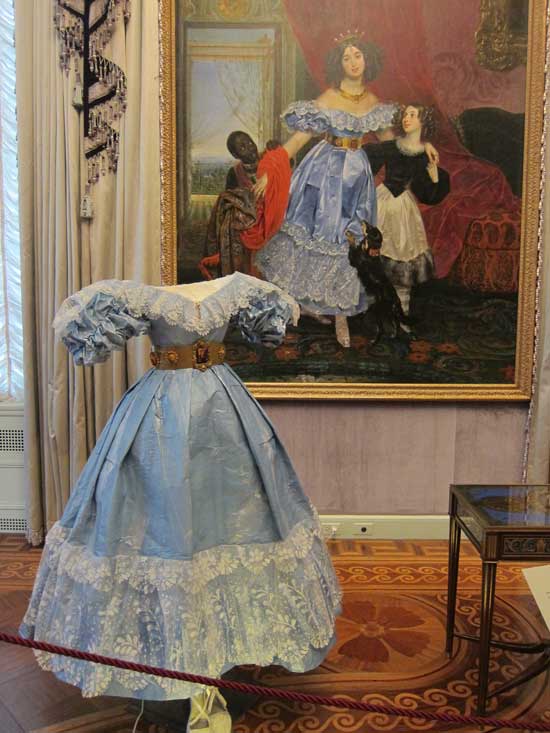
This gown was commissioned for the museum, based on one of the resident paintings, and will become a permanent part of its collection.
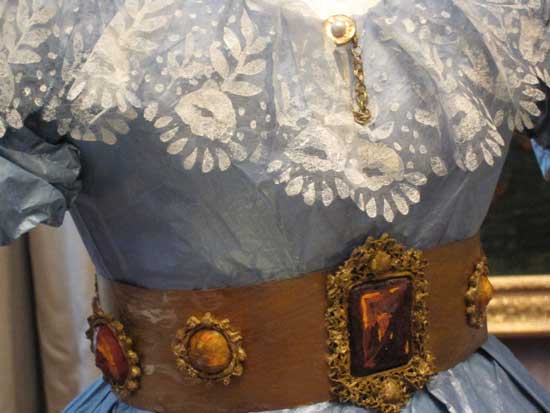
Note the lovely sheer "lace" and the jewel-encrusted "leather" belt.
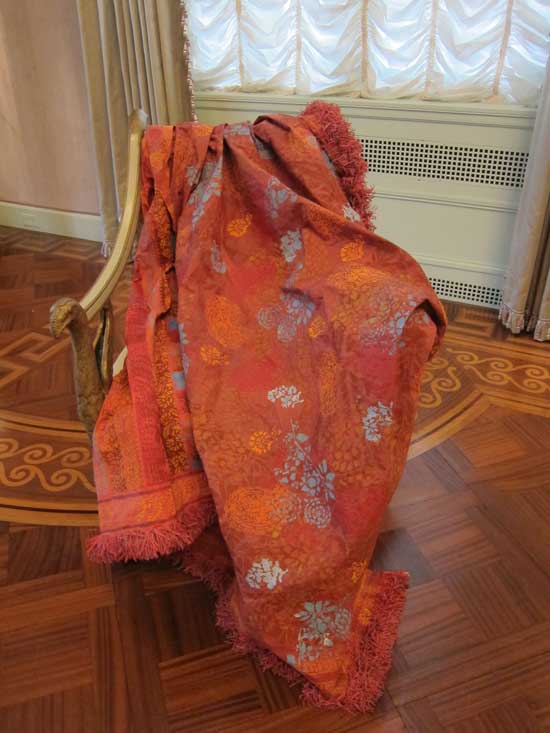
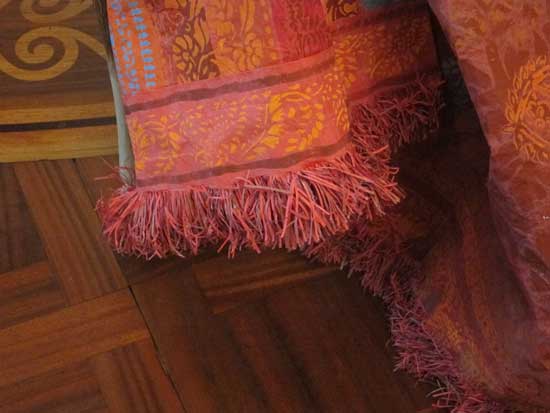
There was a coordinating shawl with the most spectacular "fringe". My friend and I were marvelling over what precision cutting was involved in this.
All in all, this was a wonderful and visually beautiful exhibit. I hope you enjoyed the pictures. If you ever have the chance to see these garments, do. You will not be disappointed.